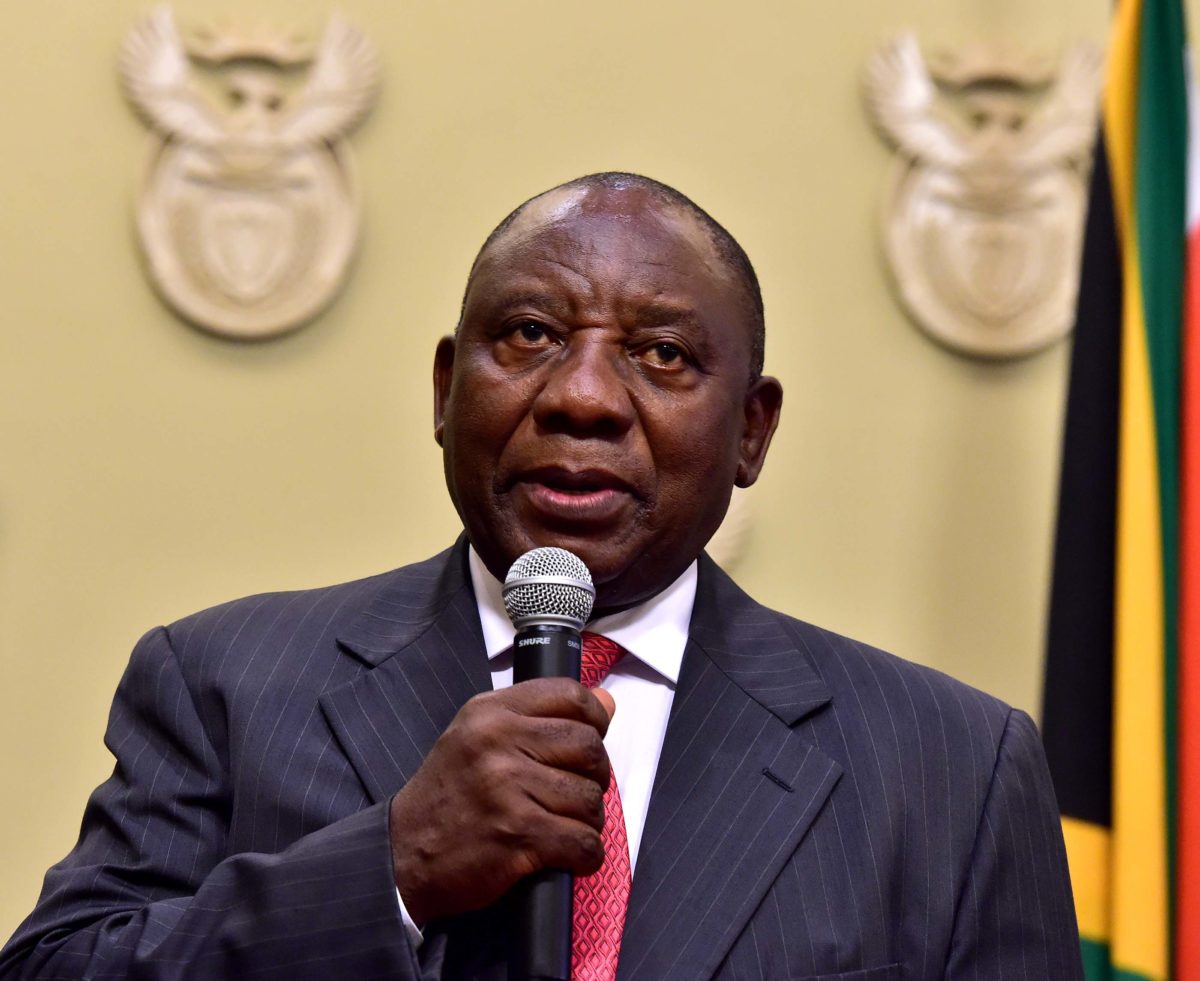With the solar industry on the back foot thanks to a resurgent coal lobby in the U.S. and Australia – and fracking and nuclear in the U.K. – brighter news emerged from South Africa yesterday, where new President Cyril Ramaphosa‘s government published a draft update to its Integrated Resource Plan (IRP).
The document, which is open for consultation until late October and concerns South Africa's electricity supply, paints an optimistic picture for PV and wind – as well as gas – even if the renewable industry will be disappointed at the probable retention of renewable energy capacity limits.
The IRP document, which updates the IRP 2010-2030 plan, presents seven scenarios that include variables such as the adoption of a carbon budget – or cap – to limit greenhouse gas emissions, the impact of market-linked gas prices and the removal or retention of the renewable energy legislation that currently caps all non self-consumption PV at 1 GW per year.
The government report splits each scenario into three phases: 2017-2030, 2031-2040 and 2041-2050. Although conceding the lowest-cost option up to 2030 and beyond would involve removing the renewable energy build limit – which also caps new wind power at 1.6 GW – the document considers the impact of the build limits marginal up to 2030, and therefore suggests sticking to the status quo.
Whilst proposing the post-2030 plan should be postponed for a future IRP update, the various scenarios all envisage renewables and gas gaining share at the expense of coal, and hint heavily at a removal of the RE capacity cap.
Government overestimated electricity demand
In the document, the Department of Energy – now headed by Jeff Radebe – proposes detailed analysis of the “appropriate level of penetration of renewable energy in the South African national grid”, citing concerns about dispatchability and security of supply, and also calls for studies of the impact of gas pricing; cleaner coal, nuclear, hydro and other technologies; and of the socio economic impact of decommissioning legacy coal power stations.
The report cites the influence of PV in reducing electricity demand through falling panel prices and, to a lesser extent, self-consumption from rooftop systems, as the department admits the demand estimates it drew up in 2010 proved overestimates, and planned capacity expansion needs to be reined in as a result. The IRP gives as an example the installation cost of fixed tilt PV, which it predicts will have fallen from ZAR16,860.60/kW ($1,190.14/kW) in 2015 to an estimated ZAR13,425/kW by 2050. For tracker-mounted PV, the report estimates the price fall seen in the same period will be from ZAR17,860.60 to 14,221.40.
In the rooftop segment there was further qualified good news for PV, with the plans to 2030 set to consider the 200 MW annual allocation for 1-10 MW projects outside the utility-scale PV figures used in the various scenarios, subject to ministerial approval.
With some 6,422 MW of renewable energy already commissioned in South Africa under the Renewable Energy Independent Power Producers Program (REIPPP) – 3,272 MW of it operational – the government expects solar to provide 10.5% of the nation's electricity by 2030, compared to 44.6% from coal, 15.7% from gas and diesel and 15.1% from wind.
With the renewable energy build limit in place, the Energy Ministry expects 1,474 MW of new solar this year, none next year, 114 MW in 2020, 300 MW in 2021 and 400 MW in 2022. Those figures are based on already commissioned projects, but it is not clear if the anticipated further slump in panel prices expected as a result of Chinese oversupply has been factored in.
1 GW cap is holding back solar
Although, curiously, the ministry foresees no new PV in 2023 and 2024, it assumes new installations will rebound to 670 MW in 2025 and will then hit their 1,000 MW limit each year up to and including 2030. An alternative scenario, without the solar cap, anticipates 1 GW would be installed in the years 2024 to 2026, followed by annual additions of 2,290 MW, 1,640 MW and 2,180 MW with a further 1,710 MW of solar in 2030 – projections which may serve to infuriate solar industry professionals chafing at the existing cap.
After 2030 the outlook appears more favorable, with the ministry stating removing the renewable energy caps would result in the lowest overall electricity tariffs, whilst the most costly option would involve imposing a carbon budget to cap greenhouse gas emissions in combination with the price of gas imports being market linked.
A stakeholder consultation on the policy update – held from December 2016 to March 2017, under the regime of controversial previous president Jacob Zuma – drew criticism the renewable cap was instituted to favor nuclear, but Reuters yesterday reported President Ramaphosa has halted plans for new nuclear before 2030.
The agency report quoted Radebe as announcing at yesterday's launch of the IRP update, that there were “no plans to increase nuclear until 2030”.
Reuters stated former president Zuma held several meetings with Russian counterpart Vladimir Putin, leading to speculation Russia's state-owned Rosatom nuclear agency was in prime position to win a contract for 9,600 MW of new nuclear capacity. President Ramaphosa has reportedly vetoed the plans and the IRP document mentions new nuclear as a post-2030 option only in the sense a study should be made into the cost and other implications of the power source as an alternative “clean” technology.
The IRP update will be submitted for cabinet approval in late October, after a 60-day public consultation period which is sure to prompt a clamor for removal of the solar cap.
This content is protected by copyright and may not be reused. If you want to cooperate with us and would like to reuse some of our content, please contact: editors@pv-magazine.com.




1 comment
By submitting this form you agree to pv magazine using your data for the purposes of publishing your comment.
Your personal data will only be disclosed or otherwise transmitted to third parties for the purposes of spam filtering or if this is necessary for technical maintenance of the website. Any other transfer to third parties will not take place unless this is justified on the basis of applicable data protection regulations or if pv magazine is legally obliged to do so.
You may revoke this consent at any time with effect for the future, in which case your personal data will be deleted immediately. Otherwise, your data will be deleted if pv magazine has processed your request or the purpose of data storage is fulfilled.
Further information on data privacy can be found in our Data Protection Policy.